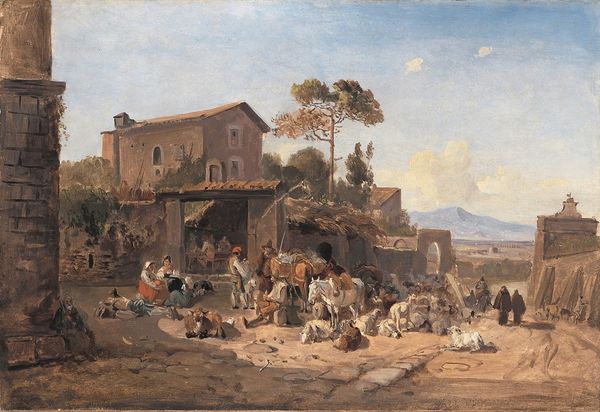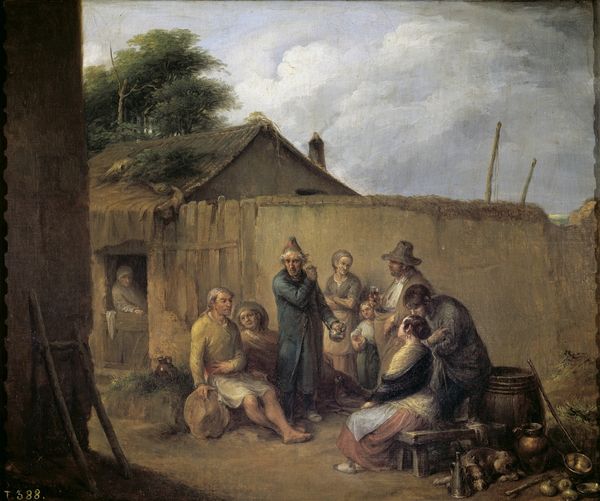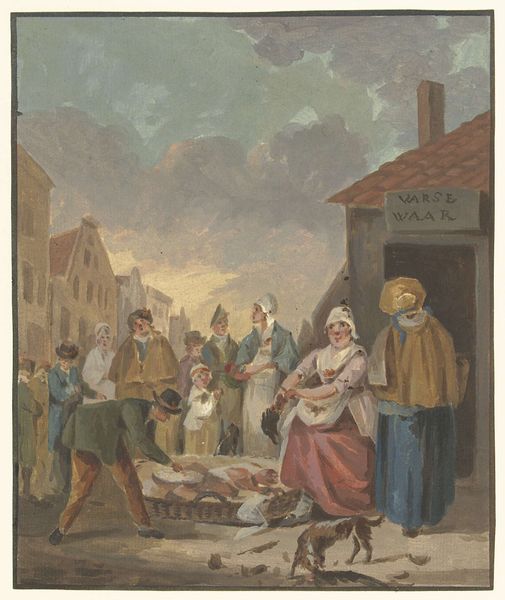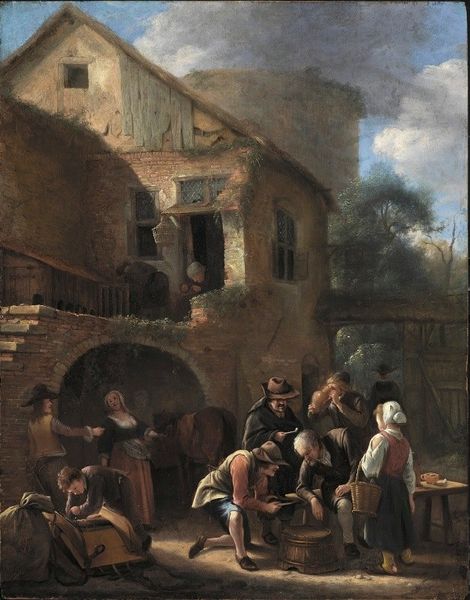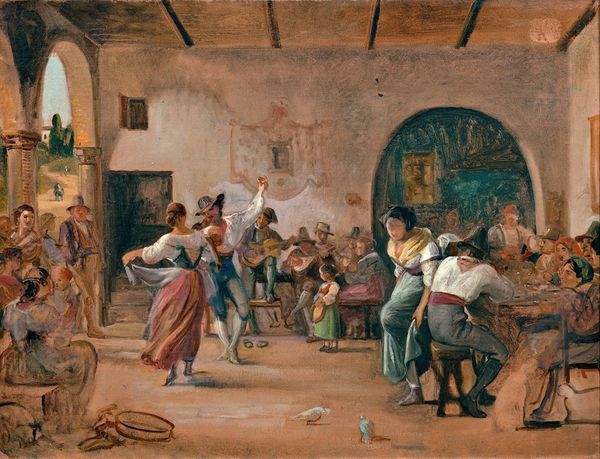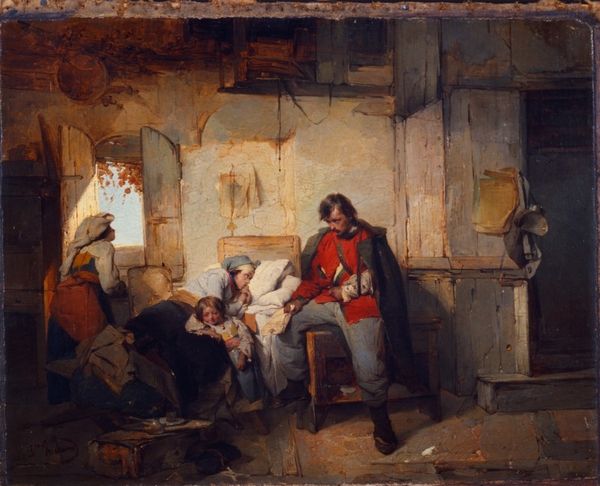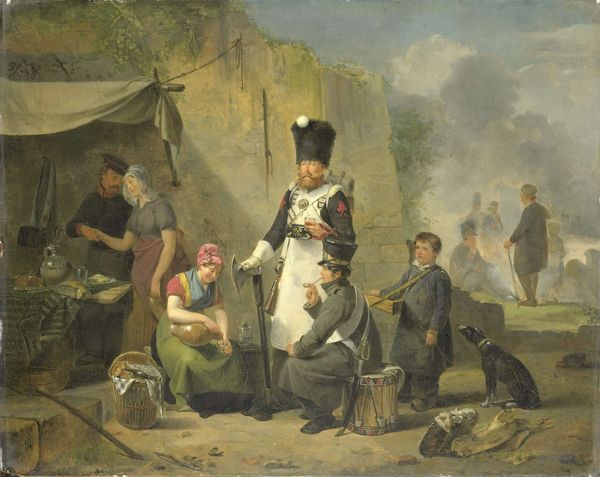
oil-paint
#
oil-paint
#
landscape
#
figuration
#
oil painting
#
romanticism
#
genre-painting
#
realism
Copyright: Public domain
Curator: Welcome. Here we have "The Masons" by Alexandre-Gabriel Decamps, rendered with oil paint. Note the landscape orientation typical of genre painting during the Romanticism and Realism movements. Editor: Immediately, the rough-hewn stone commands my attention. The texture seems almost palpable, gritty and monumental against the subdued palette. Curator: Precisely. Observe how Decamps uses light and shadow to accentuate the texture of the stone and the figures' forms, thereby organizing the painting around an almost abstract arrangement of rectangular blocks. The brushwork feels direct and economical, almost utilitarian, matching the labor represented. Editor: Utilitarian, yes. The very labor of creation, both represented within the painting and inherent in the making of the painting, become intertwined. The oil paint mimics the roughness, mirroring the material they are working with—a kind of earthy echo, where even the surface is grounded in its own materiality. How interesting the ways process mirrors process, the laying of paint mirroring the laying of brick! Curator: Quite. The composition evokes a structured dynamism. Notice how Decamps directs our gaze, pulling it left with the workers then letting the architecture guide us to the family, then subtly bringing us back with their eyeline—which directs us back to the working masons. The painting performs a kind of dance of structure. Editor: Considering the setting of this construction site and the dress of these masons, I can’t help but wonder about their living conditions. This painting acts as a glimpse into their day-to-day, reminding us of the physical demands embedded within these old industries and the role that plays on the individual. Curator: Yes, indeed, you highlight its cultural context well. I agree we must look beyond mere visual representation to understand the complete impact of "The Masons." Editor: Decamps clearly shows us here the relationship between making and life and perhaps shows the real art exists not in a finished sculpture but in the act of making, where art itself is work and work itself becomes art. Curator: An astute material observation, indeed. Thank you for that insight!
Comments
No comments
Be the first to comment and join the conversation on the ultimate creative platform.





